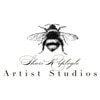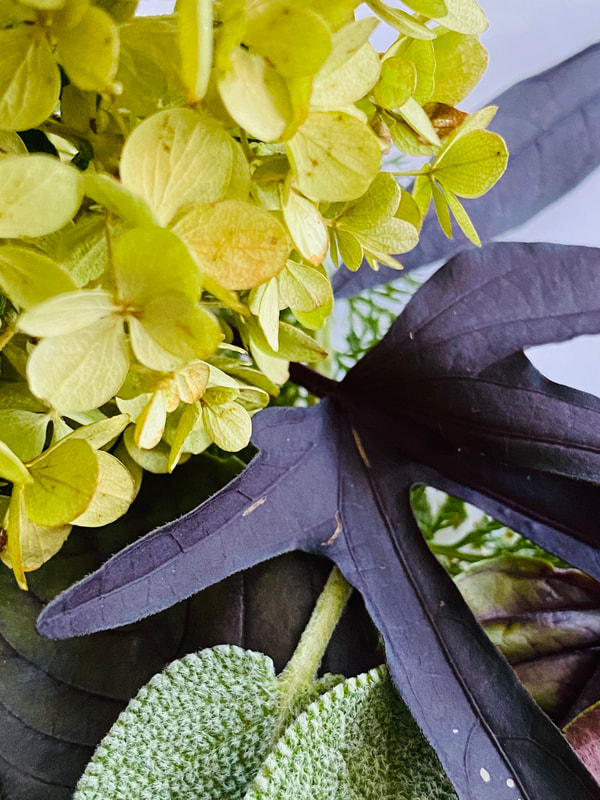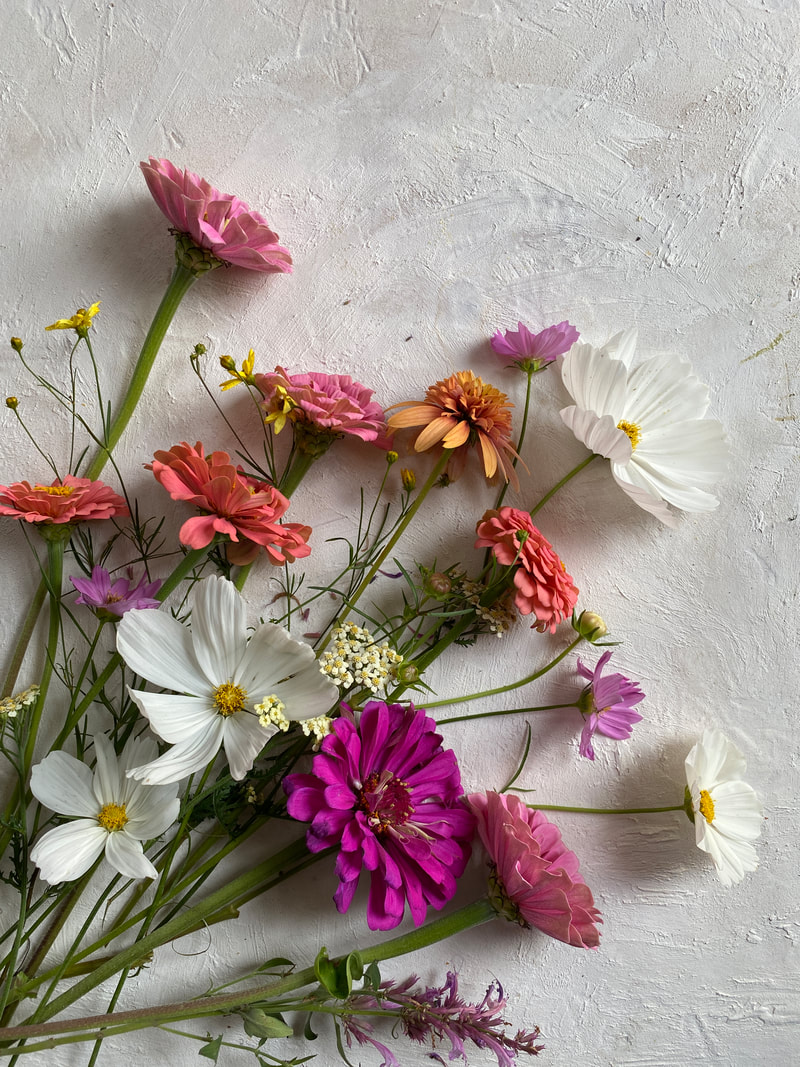Hello and welcome !
Let’s get started with the fun supplies that we will be using in this course .
The supplies we will be using are almost all fairly common, and if you have taken the first course "Cyanotypes the Magic of alternative photography" you most likely have the majority of the supplies already in your arsenal.
I am also including a resource guide with US based resources . I often site Amazon because most have access to at least see a photo of the product, and use it to compare pricing at your local art store etc. Some items are best purchased at your art or photographic paper stores and again I include stores in the US I have found them in.
You certainly don’t have to use these resource stores, I just like to at least find photos and a prices so that you can shop locally if you wish to :)
Supplies for "Cyanotypes Advanced Composition and Story Telling" workshop
Cyanotype Sensitizer Kit: Jacquard 2 part kit is the most reasonably priced kit I have found : see on amazon
Bontanicals (pressed leaves, stems, and flowers work best!)
Clear acetate sheets for negatives: In this course we will work with acetate sheets in two ways. One will be creating a negative and printing on an ink jet printer.
You can get any acetate that will run through an ink jet printer . This is my personal favorite : see on B and H Photo
Clear acetate sheets cheap . Acetate for negatives that run through the printer can be pricey. We will also be using clear acetate that we will not run through the printer and therefore is less expensive . Any art store carries plain old acetate sheets .
Cheap chip painting brushes ( look in Michaels by the bag, all home improvement stores etc)
cheap foam Brush (craft store, dollar store, home improvement store )
Fine tip and liner watercolor brushes (use any Michaels grade type water color brushes . ) a small liner , and a couple of mid size round will be perfect !
Plexiglas sheets: you will need 2 sheets of plexiglas per cyanotype . The amount you will need depends on how many cyanotypes you would like to work on at one time. I.e. if you just want to work on one at a time you will need 2 sheets. I like to work on 3 at a time so I will need 6 :) Size depends on what size paper you are working on. In the workshop I mostly use 8x10 paper and use sheets that are slightly larger than my paper . The plexiglass will just need to be slightly larger than the paper you are working on . You can find lots on Amazon . Here are some 12x12 sheets.
Why I don't recommend glass:
I get asked quite often if it is possible to use glass instead of Plexiglas. While the short answer is yes, I will explain why I can not recommend it's use. Most frame glass is temperature sensitive and will crack and shatter at 32degrees F. Also if you are using bulkier foliage , clamping down glass may cause it to not only crack but shatter and hit you as you are handling it. Cyanotypes are very hands on and there is a lot of handling and usage these sheets receive before and after exposure . Clamping, washing, and transferring the sheets in and outdoors . With the plexiglas so readily available it makes much more sense safety wise to make a small investment in the beginning for the plexiglas sheets.
Tweezers : Amazon has different little tweezer sets all the time . Here is one they have currently
small spray bottles : any inexpensive small spray bottles (3-4)
Plastic clamps: like these on Amazon
The following ingredients are mostly a pinch of this and a dash of that. We are creating wonderful recipes for our cyanotypes here, but no items need to be purchased in bulk.
Tumeric
Kosher Salt or regular salt
vinegar
black tea or tannic acid
Instant coffee
borax
soda ash (sodium carbonate)
lemon juice
walnut ink
dish soap
plastic film wrap (reuse and recycle! The more its used the better it gets)
distilled water for sensitizer kit
permanent sharpie marker
india ink
rolling pin
If you are in winter, or having trouble finding foliage for printing , try the fun pressed options on Amazon!
Pressed Maple Leaves
99 piece dried assorted leaves
Rinsing pans can be photographer's developing trays, or something like a cat litter box. Again your cost will depend on what you want to get and invest in. You simply need a tray/tub that you can handle and lift (with water )that is slightly bigger than your paper. You can also use plastic totes if you have them and are working outside . (they would be hard to lift up to your sink constantly :)
I use the photography developing trays from B and H Photo here :
16x20 set of 3
Papers
In the first course, "Cyanotypes the Magic of Alternative Photography" I encouraged the use of student grade papers like Fabriano Studio hot press watercolor for lots of printing experimentation . I still encourage the use of this paper as a sort of "rough draft" when working with a new technique or experimentation .
However, for this course of advanced composition and storytelling I will be working on my favorite tried and true papers for alternative photography processes.
These include (click on item to view link):
Hahnemuhle Platinum Rag
Fabriano Artistico Hot Press Watercolor Paper
Berger Cot 160 and 320
Other good papers for cyanotype process:
Arches Platine
Legion
Hahnemuhle Cezanne
Hahnemuhle William Turner
Mulberry/heavy Kozo (Bostick and Sullivan)
Let's talk about how much you will need for just a second. This is largely going to depend on how many cyanotypes you would like to create in each segment of the course .I will warn that cyanotypes are an easy addictive rabbit hole to fall into happily. But papers, and additional acrylic sheets etc. can be acquired gradually . I.E. if you become addicted you will want to continue making these prints 24/7 and will need more paper . This is pretty much a 100% probability :)
For the sensitizer kit you will need only one 2 part kit . (Please note if you are purchasing Photographers Formulary instead of Jacquard do not get the "New" formula as it has a different process than the original)
These are all the basics we will need to get started creating . If you have any questions about any of the supplies listed please email me at shari.replogle5@gmail.com.
I can't wait to share this exciting approach to creating with cyanotypes with you !
See you on October 30th!
Let’s get started with the fun supplies that we will be using in this course .
The supplies we will be using are almost all fairly common, and if you have taken the first course "Cyanotypes the Magic of alternative photography" you most likely have the majority of the supplies already in your arsenal.
I am also including a resource guide with US based resources . I often site Amazon because most have access to at least see a photo of the product, and use it to compare pricing at your local art store etc. Some items are best purchased at your art or photographic paper stores and again I include stores in the US I have found them in.
You certainly don’t have to use these resource stores, I just like to at least find photos and a prices so that you can shop locally if you wish to :)
Supplies for "Cyanotypes Advanced Composition and Story Telling" workshop
Cyanotype Sensitizer Kit: Jacquard 2 part kit is the most reasonably priced kit I have found : see on amazon
Bontanicals (pressed leaves, stems, and flowers work best!)
Clear acetate sheets for negatives: In this course we will work with acetate sheets in two ways. One will be creating a negative and printing on an ink jet printer.
You can get any acetate that will run through an ink jet printer . This is my personal favorite : see on B and H Photo
Clear acetate sheets cheap . Acetate for negatives that run through the printer can be pricey. We will also be using clear acetate that we will not run through the printer and therefore is less expensive . Any art store carries plain old acetate sheets .
Cheap chip painting brushes ( look in Michaels by the bag, all home improvement stores etc)
cheap foam Brush (craft store, dollar store, home improvement store )
Fine tip and liner watercolor brushes (use any Michaels grade type water color brushes . ) a small liner , and a couple of mid size round will be perfect !
Plexiglas sheets: you will need 2 sheets of plexiglas per cyanotype . The amount you will need depends on how many cyanotypes you would like to work on at one time. I.e. if you just want to work on one at a time you will need 2 sheets. I like to work on 3 at a time so I will need 6 :) Size depends on what size paper you are working on. In the workshop I mostly use 8x10 paper and use sheets that are slightly larger than my paper . The plexiglass will just need to be slightly larger than the paper you are working on . You can find lots on Amazon . Here are some 12x12 sheets.
Why I don't recommend glass:
I get asked quite often if it is possible to use glass instead of Plexiglas. While the short answer is yes, I will explain why I can not recommend it's use. Most frame glass is temperature sensitive and will crack and shatter at 32degrees F. Also if you are using bulkier foliage , clamping down glass may cause it to not only crack but shatter and hit you as you are handling it. Cyanotypes are very hands on and there is a lot of handling and usage these sheets receive before and after exposure . Clamping, washing, and transferring the sheets in and outdoors . With the plexiglas so readily available it makes much more sense safety wise to make a small investment in the beginning for the plexiglas sheets.
Tweezers : Amazon has different little tweezer sets all the time . Here is one they have currently
small spray bottles : any inexpensive small spray bottles (3-4)
Plastic clamps: like these on Amazon
The following ingredients are mostly a pinch of this and a dash of that. We are creating wonderful recipes for our cyanotypes here, but no items need to be purchased in bulk.
Tumeric
Kosher Salt or regular salt
vinegar
black tea or tannic acid
Instant coffee
borax
soda ash (sodium carbonate)
lemon juice
walnut ink
dish soap
plastic film wrap (reuse and recycle! The more its used the better it gets)
distilled water for sensitizer kit
permanent sharpie marker
india ink
rolling pin
If you are in winter, or having trouble finding foliage for printing , try the fun pressed options on Amazon!
Pressed Maple Leaves
99 piece dried assorted leaves
Rinsing pans can be photographer's developing trays, or something like a cat litter box. Again your cost will depend on what you want to get and invest in. You simply need a tray/tub that you can handle and lift (with water )that is slightly bigger than your paper. You can also use plastic totes if you have them and are working outside . (they would be hard to lift up to your sink constantly :)
I use the photography developing trays from B and H Photo here :
16x20 set of 3
Papers
In the first course, "Cyanotypes the Magic of Alternative Photography" I encouraged the use of student grade papers like Fabriano Studio hot press watercolor for lots of printing experimentation . I still encourage the use of this paper as a sort of "rough draft" when working with a new technique or experimentation .
However, for this course of advanced composition and storytelling I will be working on my favorite tried and true papers for alternative photography processes.
These include (click on item to view link):
Hahnemuhle Platinum Rag
Fabriano Artistico Hot Press Watercolor Paper
Berger Cot 160 and 320
Other good papers for cyanotype process:
Arches Platine
Legion
Hahnemuhle Cezanne
Hahnemuhle William Turner
Mulberry/heavy Kozo (Bostick and Sullivan)
Let's talk about how much you will need for just a second. This is largely going to depend on how many cyanotypes you would like to create in each segment of the course .I will warn that cyanotypes are an easy addictive rabbit hole to fall into happily. But papers, and additional acrylic sheets etc. can be acquired gradually . I.E. if you become addicted you will want to continue making these prints 24/7 and will need more paper . This is pretty much a 100% probability :)
For the sensitizer kit you will need only one 2 part kit . (Please note if you are purchasing Photographers Formulary instead of Jacquard do not get the "New" formula as it has a different process than the original)
These are all the basics we will need to get started creating . If you have any questions about any of the supplies listed please email me at shari.replogle5@gmail.com.
I can't wait to share this exciting approach to creating with cyanotypes with you !
See you on October 30th!


